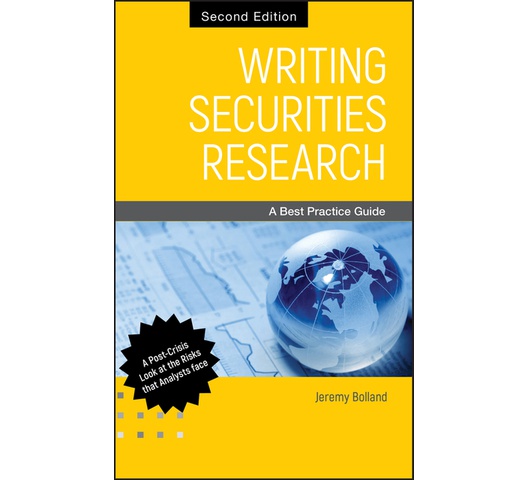
Writing Securities Research
We see that if an analyst puts a company in play, a regulator would instantly assume that the analyst is trading on inside information (especially if the information turns out to be true) or is spreading a rumour (especially if it turns out to be false). However, we also see that there is a third option – that the analyst might just have come to his or her conclusion through some good research based on verifiable facts and reasonable assumptions.
Definitions of research from around the world are examined. After all, research is generally defined by its content, not by the author's job description. As such, non-Research securities professionals such as brokers and marketers of research as well as investors, journalists and even bloggers and twitterers need to understand what constitutes “research” so that they don't fall into the regulators' purview.
As regards the risks to investment views that analysts need to highlight to their investors, the book not only examines economic and financial risks but also examines corporate governance issues such as executive compensation, equal treatment of shareholders, related-party transactions and risk management.
To demonstrate the risks that analysts, securities professionals and investors face, the book draws on many cases and examples from around the world, including many from the global financial crisis of 2007-2009. From these cases we see how penalties for those involved in the securities markets have become more serious over the years. They range from fines to imprisonment, and even to execution in some markets. To give a light-hearted angle, many of these cases are accompanied by “Alex” cartoons.

| UPC | 9780470826959 |
|---|---|
| Author | Jeremy Bolland |
| Pages | 192 |
| Language | English |
| Format | |
| Publisher | Wiley |
| SKU | 9780470826959 |

